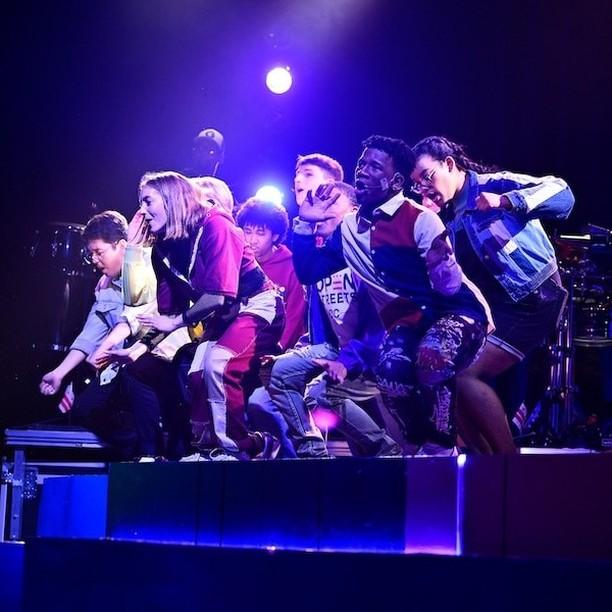Georgetown students and local artists collaborated to tell the story of the development of go-go music, a funk music genre originating in D.C., and its cultural and political impact on the District in a new musical.
The Georgetown Theater and Performance Studies (TPST) program collaborated with the Black Theatre Ensemble (BTE) to put on eight performances of the musical “Making the Go-Go Band,” which Georgetown professor Natsu Onoda Power and musician and producer Charles “Shorty Corleone” Garris co-directed, in Gonda Theatre from Nov. 8 to 18. Eight Georgetown students and two local high school students featured in the production’s ensemble, alongside five students and six go-go musicians from Washington in the on-stage band.
Lucia McLaughlin (CAS ’25), a member of the ensemble, said the show was upbeat and lively, a good distraction from school work.
“Making a Go-Go Band is a high energy, enthusiastic performance,” McLaughlin told The Hoya. “Everyone that is part of the cast, crew or band genuinely wants to be there and this really comes through in each of our shows. We are all very bubbly and bouncy on stage. The music really forces you to become energetic.”
Chuck Brown, a singer and guitarist known as the “Godfather of Go-Go,” started go-go music in the early 1970s as a mix of funk, hip-hop and reggae music. The genre got its name because of its ability to keep people “going and going” on the dance floor.
Cameren Evans (CAS ’24), a member of the ensemble, said part of Onoda Power’s vision was to create a floor for the audience to dance on while the performance took place.
“The crowd has been so receptive,” Evans told The Hoya. “A big part of Natsu’s vision involved having a dance floor at the bottom of the stage, which freaked some of the cast out — Would people get it? Would they actually come down? — but there hasn’t been a show where people don’t come to the front and dance with us.”
The performance includes moments of call-and-response in the songs, a key part of go-go music, as well as a trivia section where four audience members come on stage to answer go-go-related questions. Trivia winners got to pick a song of their choice that the band would play live without having rehearsed it.

McLaughlin said the cast benefits from audience interaction during the production.
“The crowd is one of the best aspects of this production,” McLaughlin said. “It is an interactive performance, after all. The cast feeds off of the audience’s enthusiasm when we are on stage. It really feels like energy is being passed through the theater and this meaningful human connection uplifts everyone.”
McLaughlin said collaboration between Georgetown’s Department of the Performing Arts and the BTE, a Georgetown group which produces dramatic works celebrating Black American cultural heritage, allowed performers to understand aspects of go-go which are rooted in African-American culture.
“The collaboration between Black Theatre Ensemble and the Department of Performing Arts allowed for a lot of open and honest conversations,” McLaughlin said. “These conversations then translated into our script and performance through our representation of a predominantly African-American musical genre.”
Paul Noone (SFS ’25) attended the Nov. 15 performance and said the musicians and students showed how go-go music has stayed popular among generations.
“The non-Georgetown performers were an essential aspect of the event,” Noone told The Hoya. “While the Georgetown students led the show, by including longtime go-go legends as well as D.C. public school students, the casting illustrated how go-go transcends generations.”
Evans said the local musicians brought authenticity to the performance.
“These guys have been doing go-go for decades, so they’re like walking encyclopedias,” Evans said. “D.C. used to be a centrally Black city, and most of the students didn’t know anything about go-go, so to be authentic at all, collaboration was necessary. The only way this could have worked was to involve members of the go-go community.”
McLaughlin said being part of the performance has brought her new energy.
“Even after a long school day with various stressful tasks, you really get to leave that all outside of the theater. The music draws you in and you just let go,” McLaughlin said.














